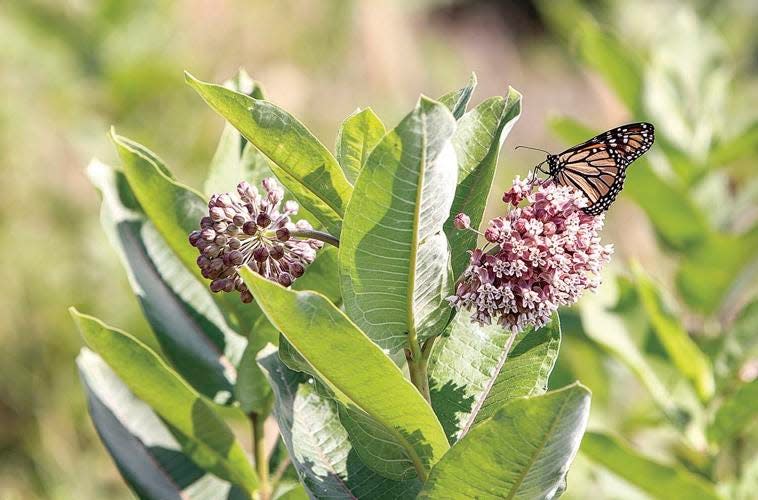Monarch experts say butterfly population up thanks to local conservation efforts

More monarch butterflies spent the winter in Mexican mountain forests compared to the previous year, Mexico’s Commission for Protected Areas reported recently.
Known as the eastern monarch population, the monarchs that overwinter in Mexico migrate north through Texas and the Southern Plains, up through the Northern Plains, Illinois and the Midwest before moving into the Great Lakes region.
More: A local glimpse into life of the monarch
Mexican officials reported a 35% increase in the forested area where the butterflies stayed. The population covered 7 acres of trees compared to 5.2 acres the previous year. The annual butterfly count doesn’t measure numbers of individual butterflies, but the area they cover when clumped in trees.
Monarch expert David Zaya, a plant ecologist with the Illinois Natural History Survey, reported seeing his first monarchs of the season May 25. Earlier, Zaya had projected the first monarchs would start arriving in Illinois in late May.
“The overwintering monarch butterfly numbers each year should be viewed with an eye to the recent past. Not only should we be looking at the 2.8 hectares (7 acres) from this year, but also at the trends in the last 10 or so years,” Zaya told FarmWeek.
“My takeaway from the reports out of Michoacán (Mexico) is that monarch numbers this year are ‘average’ for the last seven years — actually the median, not exactly the average,” Zaya continued.
More: Bishop Hill holds hummingbird homage
“If we’re hit with another extreme year like 2012, or even worse two extreme years, the species could be on the brink of extinction. For that reason, conservation efforts along the migration route and especially here in their summer breeding range are urgently important,” he said.
Illinoisans can support monarchs by planting flowers, such as coneflowers and black-eyed Susans, for adult butterflies. Their larvae depend on milkweeds and grow on only plants in the milkweed family.
In Zaya’s view, farmers and rural landowners have an opportunity to make an impact because of the Conservation Reserve Program (CRP) and other large-scale conservation programs, which he described as “game changers for pollinator conservation in Illinois.”
More: Wethersfield science students work to bring WHS landscape back to life
“CRP and other programs like that are going to have a huge impact on conservation of pollinators and other creatures in Illinois,” he continued. “When you create habitat for monarchs and other pollinators, it helps larger wildlife and plants.”
Experts projected this year’s monarch increase could reflect the butterflies’ ability to adapt to more extreme bouts of heat or drought by varying the date when they leave Mexico, according to the Associated Press.
Traditionally, the monarchs arrive in the Mexican forests in early November and leave for the U.S. in March.
More: Kewanee Scouts get busy saving bees by creating 'hotels' where the insects can rest
Last year, the butterflies left in February and escaped the heat and drought just north of the border that came in April and May. This year, they stayed later until April.
Next year’s numbers might reflect if the delay proved beneficial, according to a government commission spokesman.
Monarch butterflies west of the Rocky Mountains overwinter on the California coast. This year, their numbers rebounded to more than 250,000 butterflies.
This story was distributed through a cooperative project between Illinois Farm Bureau and the Illinois Press Association. For more food and farming news, visit FarmWeekNow.com.
This article originally appeared on Star Courier: Monarch experts say butterfly population up thanks to local conservation

